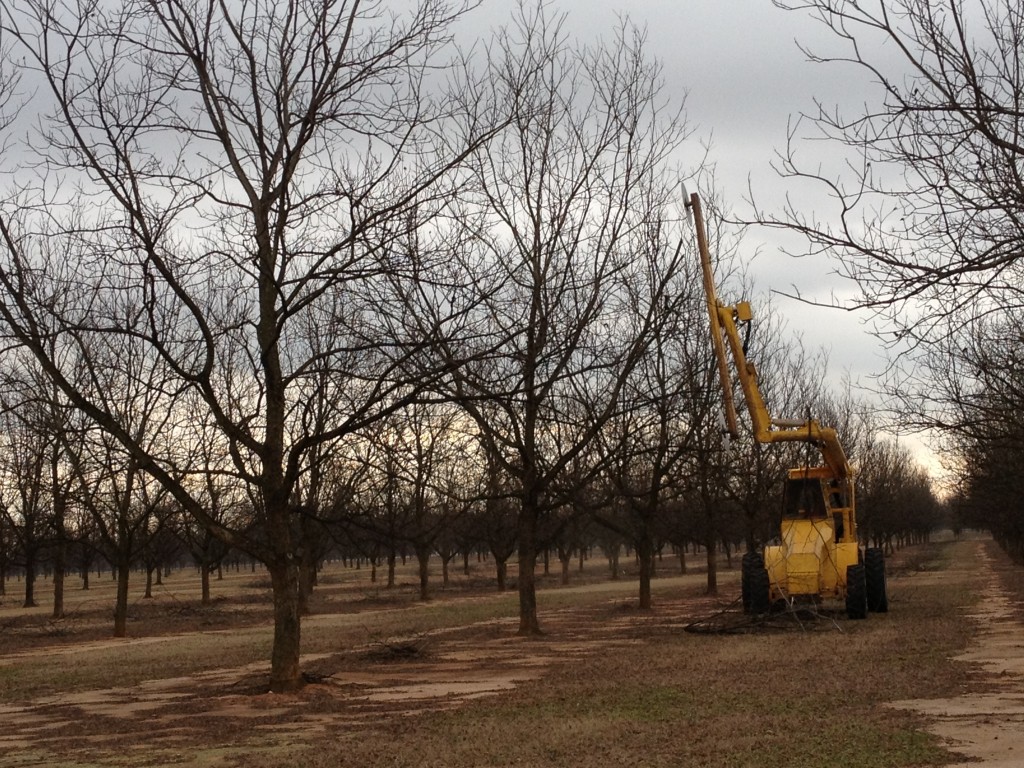
By Clint Thompson
There are so many advantages to growers hedging their pecan trees, there is no reason not to do it. That is the mindset shared by Lenny Wells, University of Georgia Extension pecan specialist. He continues to implore Southeast pecan producers to hedge their trees this offseason.
“You minimize the alternate bearing. You get better quality and get better nut size. Your efficiency with which the tree can use water is greatly improved. For no other reason, I think one of the biggest aids it gives us here in the Southeast is that it reduces or minimizes storm damage,” Wells said. “You don’t have those big, long limbs that hang way out and have a lot of leverage on the end and break easily. You don’t have as large of a canopy presented to the wind to catch the wind and blow a tree down.”
Wells said UGA research shows 60% less damage on hedge trees compared to non-hedge trees.
What is Hedging?
Hedging is a pruning practice that is conducted in the winter. It removes all the growth on one or both sides of a tree within a specified distance from the trunk and also usually tops the tree to control the tree size. If a grower maintains the tree’s size, they are better able to apply fungicide sprays to protect the entire tree from scab disease.
“It doesn’t matter what airblast sprayer you use, you’re not going to get good coverage above 40 feet. You’re keeping that tree smaller so you’re keeping all of the crop into that area that the sprayer can cover,” Wells said.
A hedging machine is a costly investment, though. A new machine can cost as much as $300,000. Growers may need to hire someone with a machine to hedge their trees for them.









